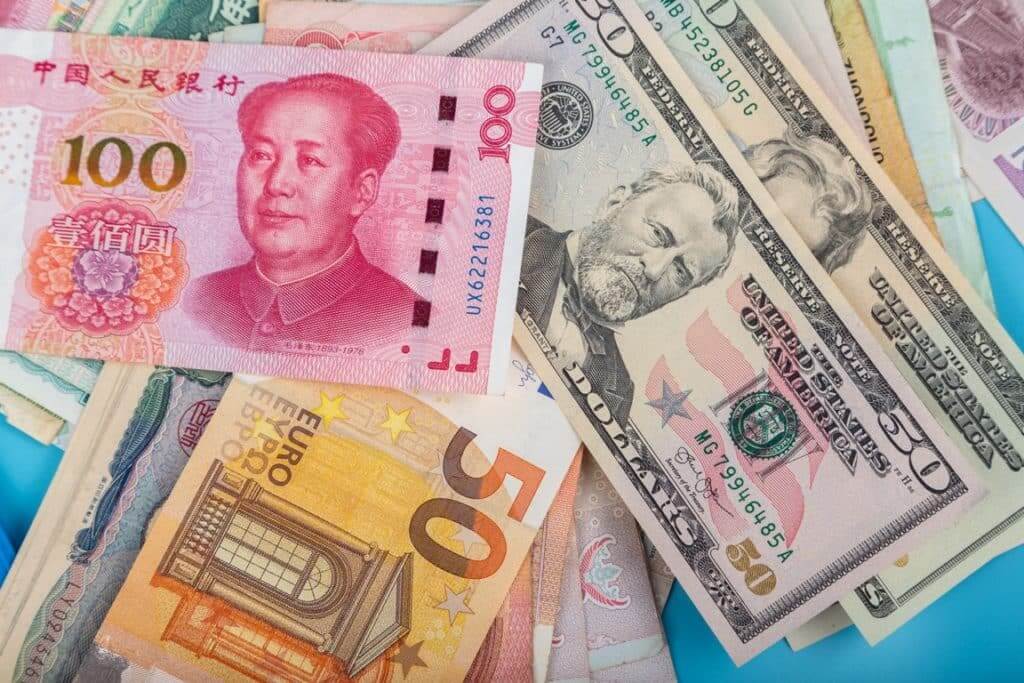The U.S. dollar fell Tuesday. What about the Euro and Sterling?
The greenback plummeted from a one-week peak versus a basket of six major currencies on Tuesday. The market sentiment turned optimistic ahead of Federal Reserve and Bank of England meetings, both due this week. Consequently, the U.S. dollar index declined by 0.57% to 110.9 today, losing some of the 0.79% gains from Monday’s session.
Investors expect both the Federal Reserve and the BoE to increase interest rates by 75 basis points (bps). Their meetings are scheduled on Wednesday and Thursday, respectively. Moreover, forecasts show that the Bank of England will likely slow down and hike rates by only 50 bps in December. The Fed might choose the same path at its meeting that month as the latest U.S. reports show some economic struggles.
Rodrigo Catril, a currency strategist at National Australia Bank, noted that the agency might decide to tone down the magnitude of rate hikes. However, that doesn’t mitigate the fact that inflation remains dangerously high, so the message will be that the job is not yet done. He also added that the greenback probably had reached its peak, but that doesn’t mean it’s coming down in the coming days.
Overall, the dollar index has soared by more than 15% in 2022 as the Federal Reserve has hiked rates aggressively, sending other currencies in the red. Considering the strain it caused on the markets, traders were relieved after some Fed officials had hinted that the central bank is discussing slowing down in December.
However, high inflation still threatens the global economy. On Monday, data showed that eurozone prices jumped by the most on record in the year through October. Despite that, the euro soared by 0.54% to $0.9934 today. The British Pound also added 0.74% to $1.1551 after tumbling by more than 1% on Monday.
How are the Japanese Yen and Australian dollar faring?
The Japanese Yen surged forward by 1.01% to 147.25 against the greenback today. Japan’s finance ministry announced on Monday that the central bank had spent a record $42.8 billion on currency intervention in October. The government decided to support the suffering yen after it plunged to 32-year lows near 152 on October 21.
Moreover, the Australian and New Zealand dollars climbed up from one-week lows as the risk-off mood receded in the markets. The Aussie jumped by 0.88% to $0.6454 on Tuesday, but it remained lower than its earlier highs after the RBA’s decision. The Reserve Bank of Australia stated that it would maintain its slower quarter-point pace for rate increases despite an unexpected rise in inflation to a 32-year high in Q3. The kiwi dollar rallied by 1.2% to $0.5885, as well.
On the other hand, the Chinese Yuan plummeted almost to a 15-year low versus the U.S. dollar today. However, it managed to reduce losses somewhat after the central bank set the official guidance rate on the weaker side of the key 7.2 per USD level.
What about the EM currencies?
Most Asian currencies surged forward on Tuesday, along with stocks. Still, gains were limited due to the Chinese Yuan’s fall. The Thai baht climbed up by 0.5%, while the Indian rupee added 0.1%. At the same time, the Singapore dollar exchanged hands 0.3% higher. Unlike those currencies, the Taiwan dollar and the Malaysian ringgit shaved off 0.1% each.
Even though the Yuan managed to rebound slightly, it was still trading at its lowest level since December 2007. Analysts at OCBC Bank noted that the Chinese currency’s weakness reflected recent USD strength, along with weaker Chinese economic data and coronavirus disruptions. According to them, FX market sentiment consolidated ahead of the Federal Reserve’s meeting over the last two days.
Meanwhile, Singapore stocks skyrocketed by 0.9%, reaching an almost one-month high. The Thai benchmark also jumped by 0.4%, experiencing its best day in two weeks. Some shares in India and China also traded in the green.
On Tuesday, the Indonesian rupiah dropped by 0.2%, hitting more than a two-year low. The country’s inflation lowered in October, but it has stood above the central bank’s target range for five consecutive months now.
Goldman Sachs analysts expect headline inflation to remain high in the coming months, considering soaring core inflation even as economic activity improves. Besides, they think Bank Indonesia (BI) will increase policy rates by another 50bp in November.

